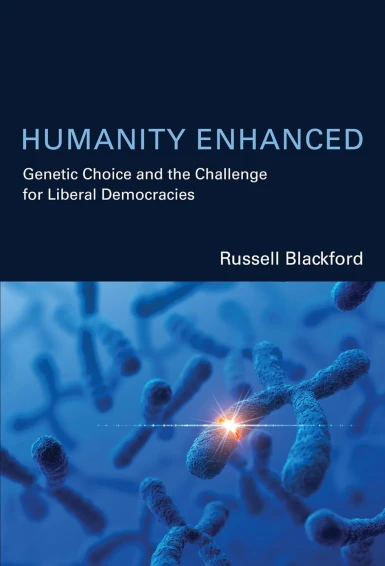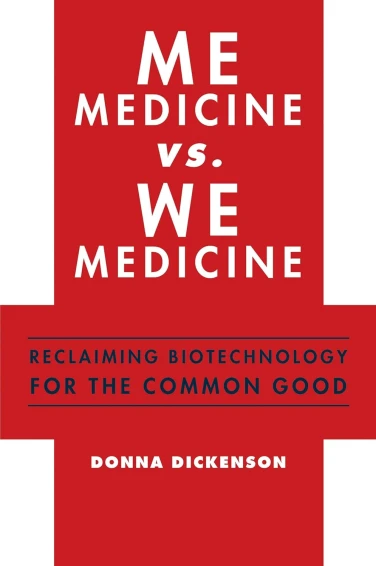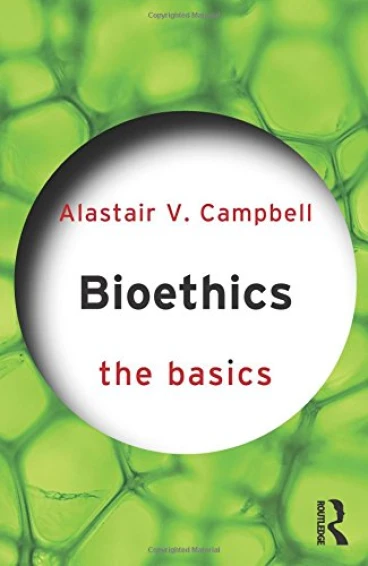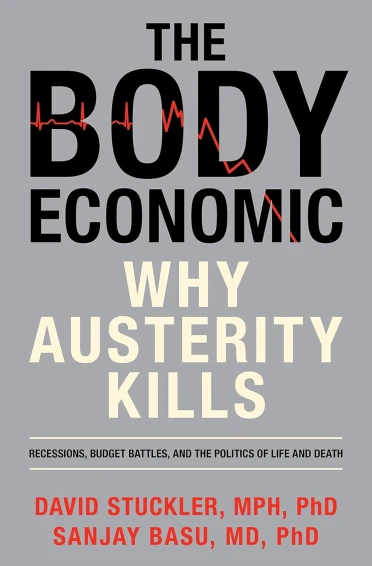
Oneworld Publications: Oxford
ISBN 978-1-85168-591-2
RRP £16.99
Consider the following facts. Roughly one-fifth of all human genes have been patented by biotechnology companies. In one recent case, it is reported that over 2,000 human eggs were used in stem cell technologies. It has been recognised that women’s tissue is worth more than men’s. What is your response to these facts? One may be tempted to explain them away as simply the result of living in a consumer society. Others may well point to the greater good of an innovative and pioneering medical and scientific industry which will bring many untold benefits to us if we just allow it to get on with its work. Award winning author and leading academic Donna Dickenson would have you think otherwise in her book, Body Shopping: The Economy Fuelled by Flesh and Blood. To her these facts and many more that could be listed point to an alarming state of affairs which has arisen involving the body, medicine, society and the economy.
Reading the dust jacket of the book, Body Shopping seeks to make a case against the supposed new found rights of businesses to harvest body parts and gain exclusive profit from the end products and processes. More than “a recital of horror stories”, the book is reported to offer a fresh and international perspective on the situation based on legal perspectives, the latest biomedical research and contemporary stories which powerfully illustrate the truth explored.
In my opinion the book fulfils these aims admirably and constitutes one of the best books currently available on matters pertaining to the commodification of the human body. To suggest that the book’s message is just a rant by the author on a particularly controversial topic backed up by spurious evidence and high profile media stories would be totally flawed.
Subtle wit and humour is skilfully mixed into clear and concise academic argument making it a very accessible read for both those who have ongoing interest in this field of study as well as those coming to it afresh. Where particular stories are used it would be more accurate to refer to them as circumspect case studies. The author spends a good deal of time outlining the story so as to give as full a picture as possible seeking to cover both sides of the stories where necessary. Consequently far from scare mongering, the book becomes an effective discussion based upon both theory and practice. This is one of the book’s particular strengths. Dickenson offers in my opinion a clear and engaging discussion and exploration of theoretical perspectives with which to engage with the scenarios discussed. Seventeenth-century English philosopher John Locke’s thoughts on property rights and how he understood them to flow from ‘mixing’ our labour with the raw materials of the production process is explored in relation to our bodies and our actions. This is then built upon by addressing Karl Marx and his ‘labour theory of value’ and the related theme of exploitation. Exploring these theoretical perspectives help to give substance and stability to arguments the author proceeds to make concerning the inherent evil of reducing our bodies to the sum of our parts and mining them for everything that we can get out of them.
Structure
The book is structured into eight chapters all of which are a similar length. Whilst I would strongly recommend the book is read from cover to cover (and even perhaps read again to fully imbibe the facts and message of the book) in order to fully appreciate the author’s thinking and proposals, nevertheless the chapters are written and presented in such a way as to allow each one to stand alone. This allows scope for groups to easily engage with the book, both in an academic and non-academic context, one chapter at a time and then help to stimulate and initiate discussion within the group.
So you think you own your body?
Perhaps one of the striking messages the reader is given through the book is the answer to the question “What makes you think you own your body?” As someone with some degree of understanding of medical law, I was surprised to learn that in fact that we do not own our bodies. As Dickenson explains our bodies are not the subject of property rights in any conventional sense. We possess a right to give or withhold consent to an operation but this is different to controlling the use of any tissue removed during the procedure. Once tissue has been removed from the body, under common law it is generally assumed that the tissue has been ‘abandoned’ by its original ‘owner’ or that it belongs to no one when it has been removed. Whilst I was slightly reassured that Dickenson notes the surprise many people express when they learn this fact, it remains somewhat disconcerting and alarming to think this is the case at a time when the biotechnology revolution is very much in full swing.
It is upon this pivotal truth that the rest of the book unfolds exploring the implications of pertinent topics such as stem cell research, egg donation, gene patenting, cord blood banking and facial transplants.
We all have female bodies
A further strength of the book is the author’s discussion of the sociological and historical development as to how the body has become an object of trade. The use of two metaphors – that of the ‘enclosure movement’ and the ‘feminisation of the body’ – particularly help to frame the author’s argument. The enclosure movement took place in the eighteenth century as part of the agricultural revolution in England. Land which had previously been available and accessible to the commons was now ‘enclosed’ by private landowners who could do with it what they willed. This included selling the land in order to raise capital which in turn went to fund the industrial revolution. As Dickenson asserts, things which were considered to be uncommodifiable were turned into private possessions. In like manners, transfer of rights over the body and its component parts are now seemingly being transferred from the individual of the transnational corporation and research institutions. Just as it was believed in the eighteenth century that the dispossessed commoner benefited from such a move, so it is believed that everyone benefits from this body shopping revolution. For example, how can a personalised spare parts package for every new born baby achieved through private cord blood banking not be a positive development? Dickenson and a great deal of evidence to date would argue otherwise.
Turning to the ‘feminisation of the body’, whilst not too surprising coming from someone who is recognised as a feminist, Dickenson makes a compelling case throughout the book that the female body has been largely exploited over that of the male. From the time of the Greeks until the eighteenth century, all bodies were seen to be male with the female body being considered an imperfect, flawed and inferior version. Consequently they could be treated with contempt and used for anything. Now developments in biomedicine have recast the situation to embrace a single-sex model where all bodies are regarded as female and open and accessible to all. Dickenson comments, “Human tissue, both men and women’s, becomes the mere matter on which biotechnology performs its masculine life-giving magic” (p.166). Nevertheless, the female body continues to be recognised as more open access than the male body. For example women’s tissue is still generally more valuable in ‘body shopping’. Dickenson argues that it is only when male bodies become reduced to mere objects that people really take notice. To think that Dickenson is therefore calling for male bodies to reach a point of being regarded as mere objects as well could be assumed. However, this is incorrect for she goes on to comment that “equal misery for all is not a very attractive rallying cry”. Drawing upon both these metaphors in tandem, Dickenson posits that “feminisation makes up for the gender-blindness of enclosure, while enclosure suggests economic arguments about private and public wealth that feminisation misses” (p.167).
To some the fact that Dickenson comes from a feminist perspective may be a reason to put off engaging with the book. However this reallyshould not be the case. Dickenson brings to light the much needed realisation of the role of women and the (ab)use of the female body in body shopping. Particularly in the case of stem cell research, the often overlooked and underplayed issue of egg donation and the use of ovulation hyper stimulation is addressed. Whereas the status of the embryo is often the focus of much of the ethical discussion surrounding stem cell research, the issue of egg supply very often does not come to the fore. This imbalance is redressed by the author in her discussion of stem cell research and discussing the controversy and scandal surrounding the Korean scientist Professor Hwang Woo-Suk in 2005. Activist organisations such as the Korean WomenLink and the coalition Solidarity for Biotechnology Watch (SBW) relentlessly pursued answers to the question of where Hwang got his eggs from and the ethical implications of the research work. Finally their hard work paid off as the questions they repeatedly raised were eventually taken notice of and eventually helped to expose the errors and lies behind Hwang’s supposed breakthrough.
Resistance is not futile
This commitment and resilience leads onto a further strength of the book. Body Shopping is also a call to arms. Having read the book one may be left wondering as to what any one individual can do to in response. But Dickenson is quick to point out that resistance is not futile and that something can be done. The situation can be transformed and the injustices corrected. The author helps to empower the reader through the use of examples where the trends have been bucked. For example, she discusses the case of the Kingdom of Tonga and France in relation to their stance on gene patenting. Both countries have taken positions which have supported local priorities and values but which in turn have been diametrically opposed to those aims of the large biotechnology corporations who wish to pursue research resulting in profitable patents. To quote American cultural anthropologist Margaret Mead, these case studies perfectly exemplify and support Dickenson’s key message that, “A small group of thoughtful people could change the world. Indeed, it's the only thing that ever has”.
In conclusion, Body Shopping is both alarming and stimulating. Exposing what could be termed the modern marketplace of human body parts, the book is a tour de force on a matter which is of immense importance as the biotechnology revolution continues to make its impact felt on our lives and perhaps more importantly on our bodies. Put simply, it is the best book I have come across on the discussion of commodification of the human body. For medical student, healthcare professional, ethicist, philosopher or lawyer; to anyone interested in issues related to the body, the book is a ‘must-read’.










